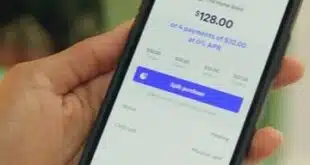After years of looking to make fare payment easier, mass-transit agencies have found the answer in contactless cards. That’s giving consumers a compelling reason to use contactless on a broader scale.
Mass adoption of a new technology requires giving consumers a compelling reason to use it on a daily basis. Contactless cards are no exception.
For years, financial institutions needed merchants to install contactless terminals before they would issue contactless cards en masse. But merchants wanted the cards in circulation before investing in the terminals. The result: Contactless payments languished.
Enter that compelling reason for consumer use. Contactless barriers are breaking down as mass-transit agencies around the country roll out open-loop fare systems, a move that promises to give riders a reason to use contactless every day and could have spillover effects as these same users start interacting with contactless terminals at stores.
Momentum for mass transit’s adoption of open-loop systems got a huge boost earlier this year as New York City’s Metropolitan Transportation Authority (MTA) and the Miami-Dade County Department of Transportation and Public Works (DTPW) began accepting general-purpose contactless cards for fare payment.
By contrast, closed-loop contactless systems, which many transit agencies in the U.S. have introduced or plan to, allow consumers to preload value on to a contactless card, but that card can only be used to pay for transit fares. They’re not interoperable with other networks.
The rollouts in New York and Miami are being closely watched because the MTA and DTPW operate in two of the 10 most populous metropolitan areas in the United States. That means they can collectively introduce contactless technology to millions of consumers and get them into the habit of using the technology multiple times daily just for transit.
In 2018, weekday subway ridership in New York averaged more than 5.4 million, and average weekday ridership for the MTA’s bus system exceeded 1.8 million. The Miami Dade DTPW system has about 6.7 million bus and train riders per month.
Now, payments experts figure the habit of everyday transit use will make consumers comfortable with tap-and-go payments for all sorts of everyday purchases. That’s why issuers and the card networks were eager to have as many contactless cards in consumers’ hands as possible prior to the MTA’s launch, payment executives say.
JPMorgan Chase & Co., which began issuing contactless cards at the start of the year, had issued about 20 million contactless cards as of May. One reason for banking giant’s push was to ensure cardholders in New York could use their Chase cards to ride the MTA.
“One trend we are seeing in other cities where transit agencies have rolled out open-loop contactless systems is that consumers actively use their contactless cards for purchases at merchants near transit stations,” says Linda Kirkpatrick, executive vice president for U.S. merchants and acceptance at Mastercard Inc. “In some of those merchant locations, we are seeing double-digit lifts.”
‘Important Use Case’
In all, 20 cities in the United States have either rolled out open-loop contactless systems for commuter-fare payment or plan to. Cities where contactless-fare systems have been introduced include Chicago and Portland, Ore., where the Chicago Transit Authority and Tri-Met Transit Authority, respectively, accept contactless payments for bus and train fares.
Transit agencies in Boston, Los Angeles, San Francisco, and Washington D.C. are reportedly planning to introduce open-loop contactless-card or mobile-based payment systems. Mobile-based systems typically include a tap-and-go feature, making them perfect for quickly moving commuters through a turnstile.
So far, adoption rates by consumers where open-loop contactless systems have rolled out have been impressive. The MTA reached 1 million taps in August after launching May 31. The volume was three to four times more than projected, according to the MTA.
Similarly, the regional transit authority TransLink in Vancouver, where contactless acceptance for transit launched in May, logged 1 million fares paid with contactless cards in two months. The biggest success story in mass transit, however, is in London. More than four years after launch, 50% of all Tube (subway) and train riders pay with a contactless card or mobile device.
Driving consumer acceptance of contactless for mass transit is the speed, security, and convenience of tapping to pay in an on-the-go environment, says Dan Sanford, global head of contactless payment for Visa Inc. Then, once introduced to the benefits of paying for transit fares with contactless cards, consumers are more apt to pay for purchases elsewhere using the same cards or mobile wallets.
“Transit continues to be an important use case for introducing consumers to tapping to pay as riding public transportation to and from work, home, or school is a critical part of daily life,” Sanford says. “Tapping to ride helps introduce contactless payments to more consumers and can have a positive impact on the way consumers pay for things every day, even beyond transit.”
Outside the U.S., Visa says more than 50% of consumer face-to-face transactions through its network occur with a tap, as opposed to inserting a card in a point-of-sale terminal. That’s up from less than 30% two years ago. In addition, contactless payments represent at least one-third of all face-to-face transactions in nearly 50 countries, up from 35 countries at the end of Visa’s last fiscal year.
Helping to accelerate mass transit’s adoption of open-loop contactless systems is the increasing number of cards coming into circulation in the United States. Visa expects 100 million Visa-branded contactless cards to be issued this year and 300 million cards to be in circulation by year-end 2020.
Mastercard says it has commitments from issuers to bring more than two-thirds of its volume to contactless cards in the U.S. over the next two years. As of July, American Express Co. has publicly stated all new and replacement cards will be contactless.
Meanwhile, merchants are ramping up their ability to accept contactless cards. Mastercard says nearly 60% of its U.S. card-present volume originates at contactless-enabled merchants. Visa says 82 of its 100 largest merchants by transactions in the U.S. offer tap-to-pay at checkout.
That figure, which does not mean all transactions are contactless, is higher in such categories as grocery and drug stores, quick-service restaurants, and transit, where speed and convenience are valued by consumers, Visa says.
Open to Open-Loop
Now that the chicken-egg conundrum facing contactless cards is being addressed, transit agencies that previously launched proprietary contactless fare systems, such as Dallas Area Rapid Transit (DART), are moving to open-loop systems.
“When we first began looking at contactless acceptance in 2011, [general-purpose] contactless cards were not widely distributed, so it did not make sense for us to go that route,” says Tina March-Pierre, assistant vice president for innovation at DART.
Now DART, which began rolling out its proprietary system in 2015, plans to start piloting open-loop acceptance in the December-January period, and begin a rollout some time in the first quarter of 2020.
March-Pierre cautions, however, that the rollout is dependent on how smoothly the pilot goes and whether there are enough contactless-card holders in its operating area to justify the move. To determine the latter, DART is talking to issuers in the region about their contactless card plans.
Other transit agencies that were early adopters of proprietary contactless fare systems include Chicago’s CTA, which has since added open-loop acceptance.
Transit agencies are also starting to think beyond single-fare transactions. Now, they are looking to broaden use of contactless technology to include the purchase and use of daily, weekly, and monthly passes that can be stored in a mobile wallet or tied to a contactless credit or debit card.
For many transit agencies, the first step in this process is fare-capping. That’s a practice in which a rider paying for one-way fares throughout the day makes enough trips to equal the amount of a daily pass. Once the cost of a daily pass is reached, the cardholder is no longer charged for rides that day.
“Fare-capping is something a lot of transit agencies do and is relatively easy to implement,” says Juan Ortiz, regional director, business development, for Bytemark Inc., a New York City-based provider of transit-fare solutions, including contactless acceptance. “One reason transit agencies are deploying open-loop systems is their versatility when it comes to adding modules to support other fare options.”
The Miami-Dade DTPW, which launched its open-loop system in August at 23 commuter-train stations with plans to add bus fares in the following weeks, supports daily fare-capping for consumers paying with contactless cards.
Looking ahead, the agency plans to add digital monthly passes that can be downloaded to a mobile wallet. The Miami-Dade DTPW accepts contactless bank cards, digital wallets such as Apple Pay, Google Pay, and Samsung Pay, and wearable devices such as Fitbit.
But supporting daily and monthly passes through its contactless-fare system is just the tip of the iceberg. The Miami-Dade DTPW also plans to create regional passes that are interoperable with transit agencies in adjacent Palm Beach and Broward counties as well as with third-party transit providers, such as Uber and Lyft.
By purchasing a regional pass that can be loaded into a mobile wallet, a commuter can enjoy unlimited rides on any mode of transportation within the boundaries of the pass and for the duration of the pass.
For example, a commuter who has purchased a monthly regional pass can take an Uber from his apartment to a train station, then board a train to the airport—or have the cost of the trip covered as part of the fee for the pass.
“Having one app that works across all modes of transportation brings economies of scale to fares for consumers by eliminating multiple fare schedules, and allows the commuter to pay with a single option,” says Alice Bravo, director of Miami-Dade DTPW.
One reason Miami-Dade DTPW is moving to support monthly passes and regional fare cards that can be loaded into mobile wallets is so consumers don’t have to check their credit card statement to see if they have been properly charged for each fare, Bravo says.
Bullish on the Future
As more transit agencies embrace open-loop contactless cards and issuers put cards in the hands of consumers, payments experts are bullish about the future of broader contactless-card acceptance in the United States.
“Mass transit is helping to build out the contactless infrastructure in the U.S.,” says Matt Cole, president of San Diego-based Cubic Transportation Systems, which has worked with Visa and Mastercard and several transit authorities to install contactless systems. “And that helps usage in the retail world take off.”





